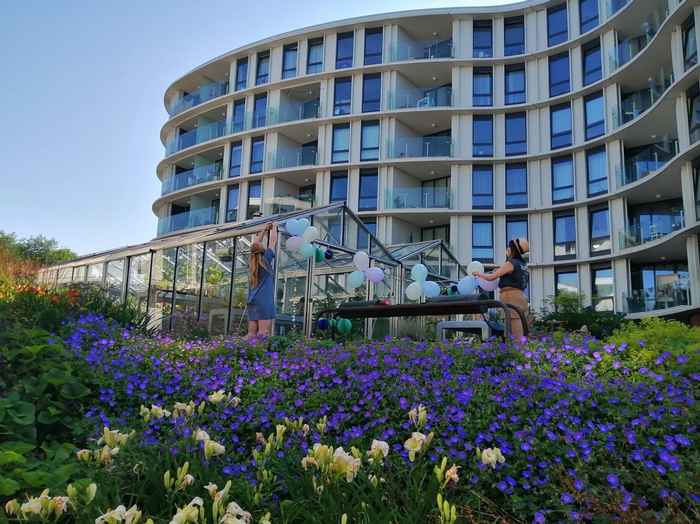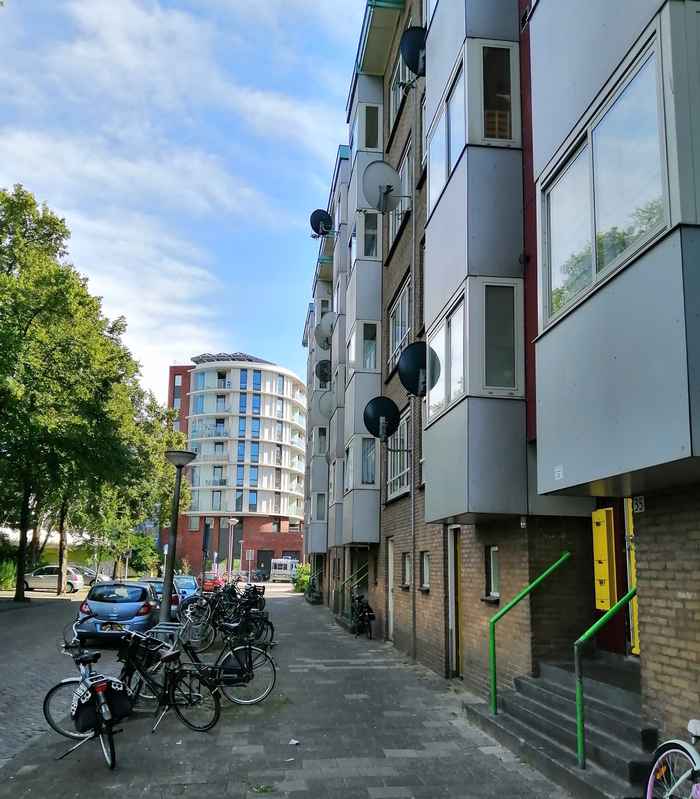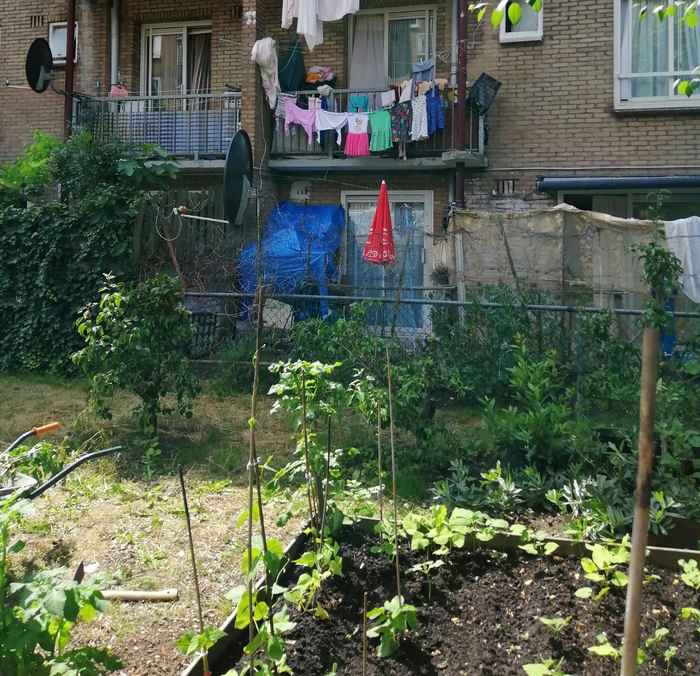Bos en Lommer: Amsterdam’s gentrification frontier – revisited
by Eline Hansen
Perhaps with predictable inevitability – it has. Now, some twenty years on I am a resident - and gentrifier - of the Bos en Lommer, in a neighbourhood on the other side of the A10 ring road. I live in a building which sits on the site of a former informal green space in the Kolenkitbuurt. The land was sold by the local authority to an American private development consortium just after the 2008 financial crash. The consortium engaged award-winning architects to build an award-winning complex in a neighbourhood continues to be burdened by poor housing and overcrowding. Unfortunately, I was not privy to the local authority’s planning decisions at the time, but looking back through policy documents it is possible to trace how certain policy ideas around liveability, immigrant integration and urban renewal intersected to legitimize the construction of such a (currently) dichotomous residential landscape.

In 2003 85% the neighbourhood’s population was classified as having a ”non-western” migration background. Just as in many other migrant neighbourhoods at the time, particular associations were made between indices of crime, poor housing, low education levels and high unemployment etc, and the ethno-cultural background of the people who lived there. The prevailing opinion at the time was that, due to white urban flight, “these people” had been left behind. They had not integrated into mainstream Dutch society and were living “parallel lives”. What was needed was to attract back those who had left, or indeed new residents with more spending capacity by providing mixed tenure types. The idea being that daily contact with others from different ethno-cultural backgrounds would create vibrant, tolerant and liveable neighbourhoods which would somehow “help” residents with a non-western background to integrate into Dutch society.
In academic writing there is nothing new about this. Plenty of scholars, including many here at the Centre of Urban Studies, have written in great detail how social mixing through a mixed-tenure policy approach in “disadvantaged” neighbourhoods has resulted in a form of gentrification in which the state plays an explicit role. What I find interesting, however, is how policy assumptions about social relations in the Kolenkitbuurt at the time helped to legitimise this particular approach. In particular the assumption that social cohesion in this low-income, ethnically heterogeneous neighbourhood was either lacking or somehow different to social cohesion in wealthier, more ethnically homogenous neighbourhoods. This assumption created the space to allow planners and policy makers to play with ideas around a newly imagined community where people from different ethnic, cultural and socio-economic backgrounds would live side by side. This would create a vibrant and tolerant neighbourhood - in keeping with the City’s aspirations around diversity and tolerance.


So where are we now some twenty years on from the Bos en Lommer being the next frontier of gentrification in Amsterdam? Certainly the demographics are changing due to an influx of new residents, not just white native Dutch, but also young professionals from all over the world who appear oblivious to the fact that they live in the Kolenkitbuurt – believing, instead, that they live in Amsterdam West, or even indeed, the BoLo.
Policy has also shifted along with this shift in demographics. The focus now lies on encouraging social relations between old and new residents across a socio-economic divide rather than an ethno-cultural one. All manner of projects led by social entrepreneurs, artists and place-makers, alongside resident initiatives receive funding from the Local and City Authority in order to bring residents together and get to know one another. In this sense the policy aspirations of the imagined community have not totally gone away, but there is also some recognition that the social mixing policies through mixed tenure have not necessarily had the desired outcomes.
Meanwhile, issues and questions around equitable access to local resources and social justice seem much harder to confront, and the discourse of “parallel lives’ in migrant neighbourhoods is once again raising its head in popular and political debates. How will this all play out for the residents of the Kolenkitbuurt? Is this just a moment in time? Will we see the demographics of the neighbourhood change completely as a particular process of gentrification rolls out across the rest of the neighbourhood? Or will the glimmer of recognition within the local authority that equitable access to safe and affordable housing for all its residents’ maybe a prerequisite to achieve its policy of desirable social mixing? What interests me during this period is the continuing local policy debates around social relations in the neighbourhood and what it means for its residents. Do these debates fit with the reality of those who live in the Kolenkitbuurt? How do they legitimise certain policy approaches? Or do these debates serve to conceal rather than confront much more sticky issues around class, ethnicity and equity?
Eline Hansen currently undertaking an ethnography in the Programme Group of Political Sociology. Using theories of racism to unpack policy assumptions around social relations in the Kolenkitbuurt, a neighbourhood in Amsterdam West, she wants to understand how certain policy assumptions around social relations legitimise certain forms of intervention, while ways in which residents live together in the everyday appear to go unrecognised, or, at times, are even undermined by the very interventions which are thought to improve local social cohesion.